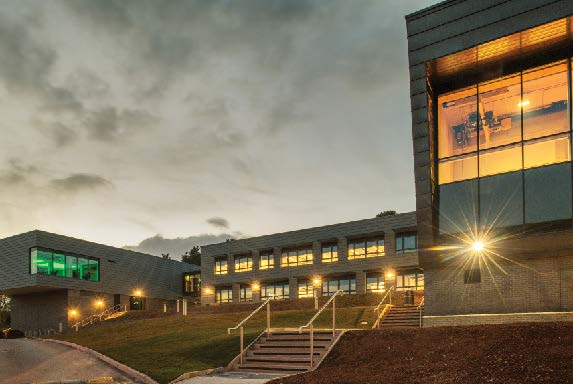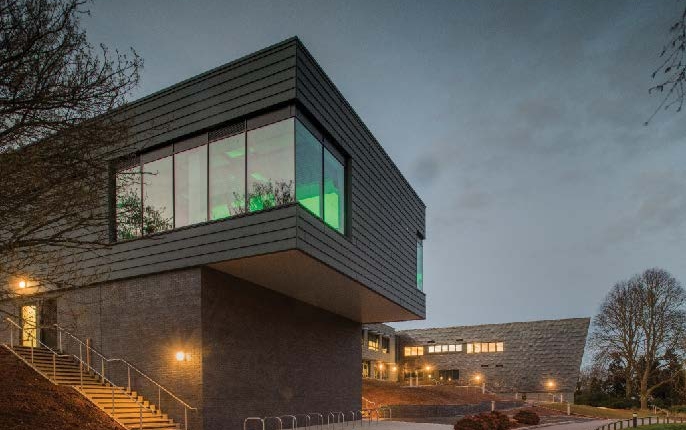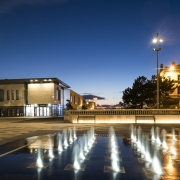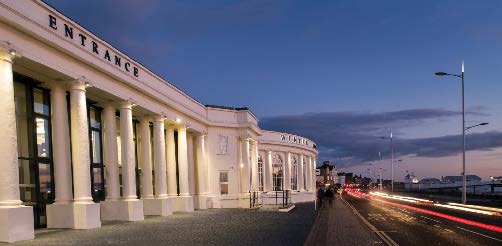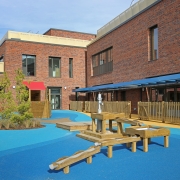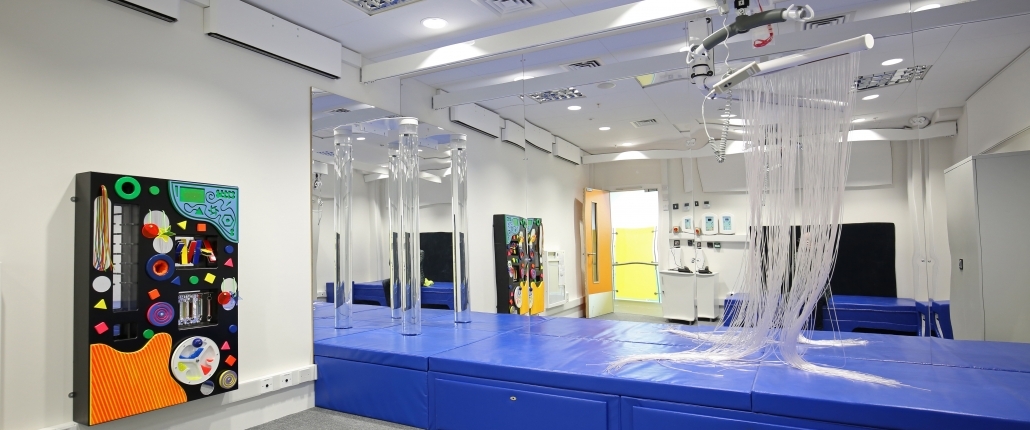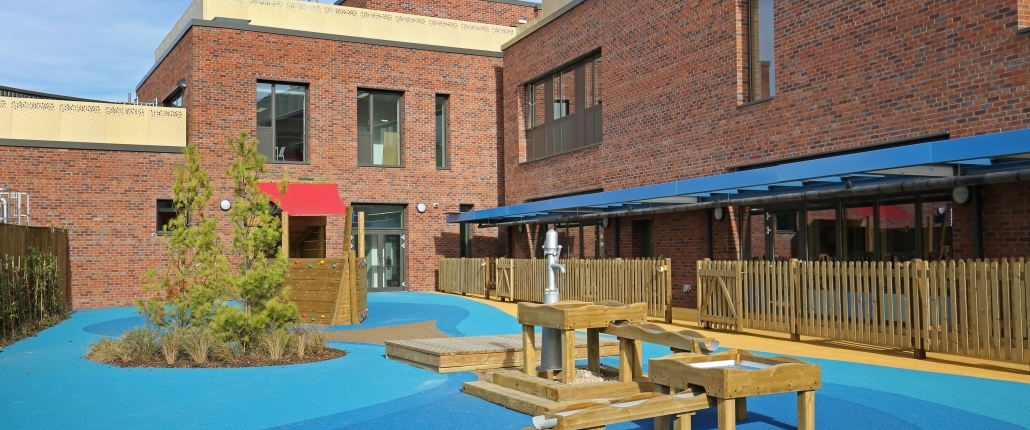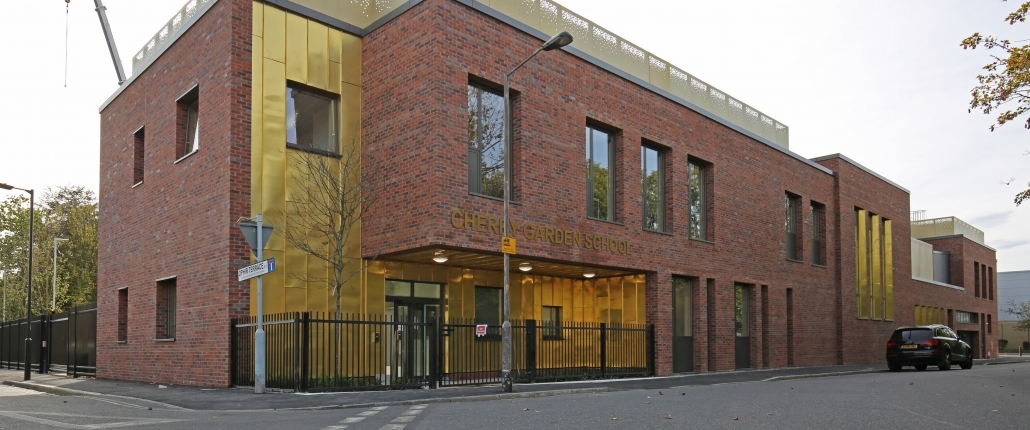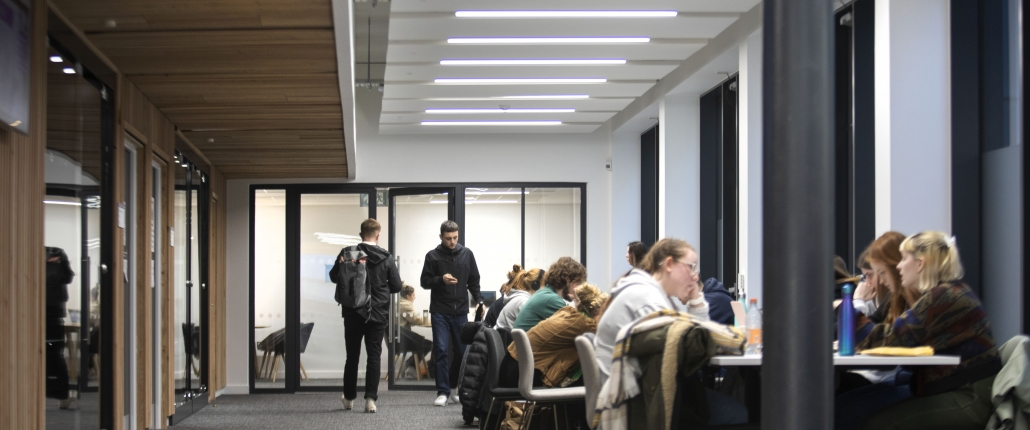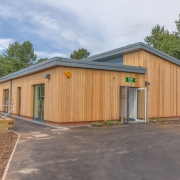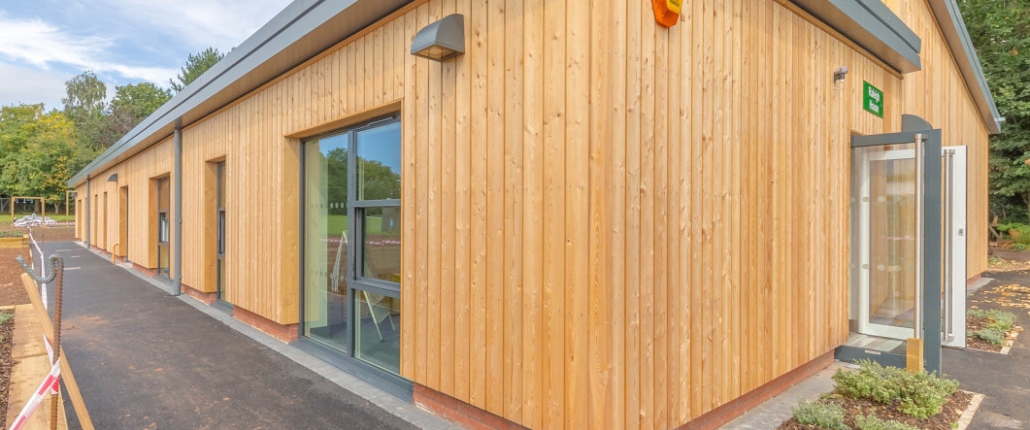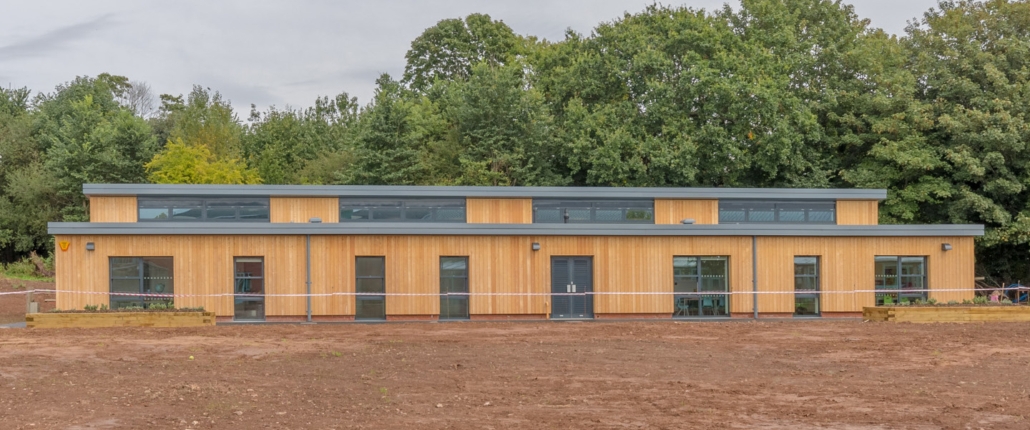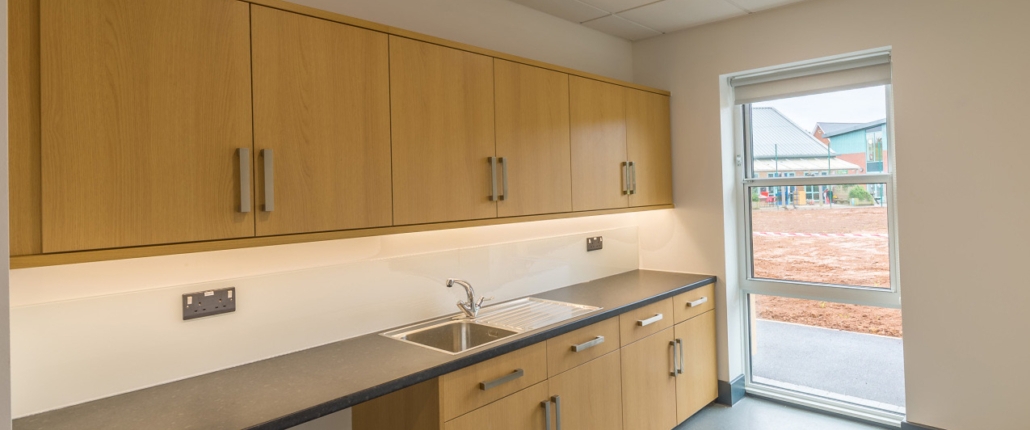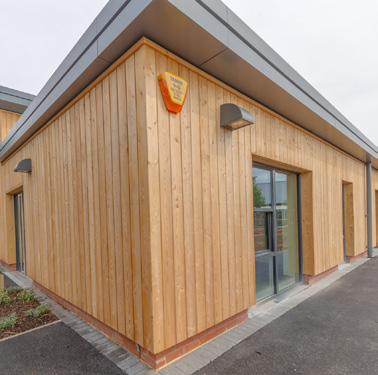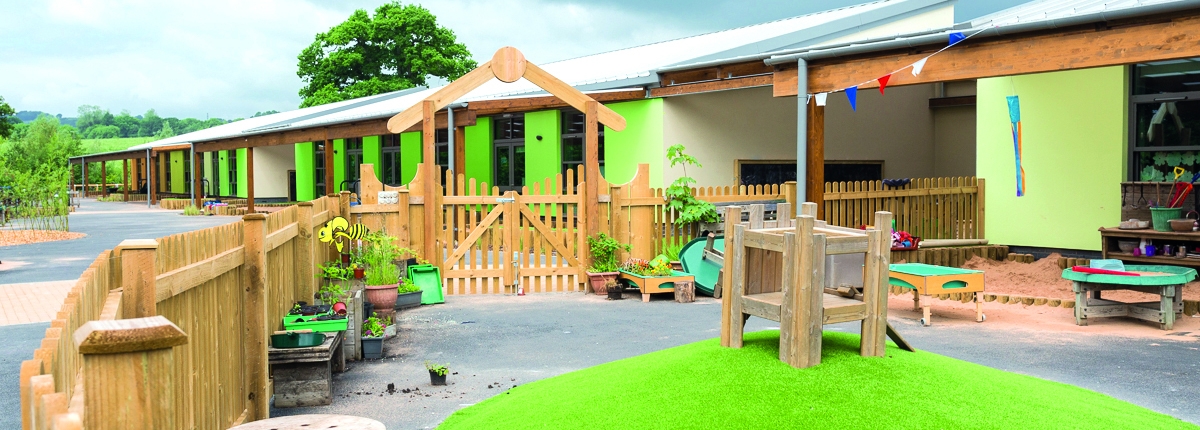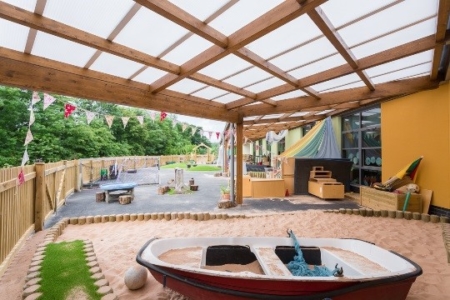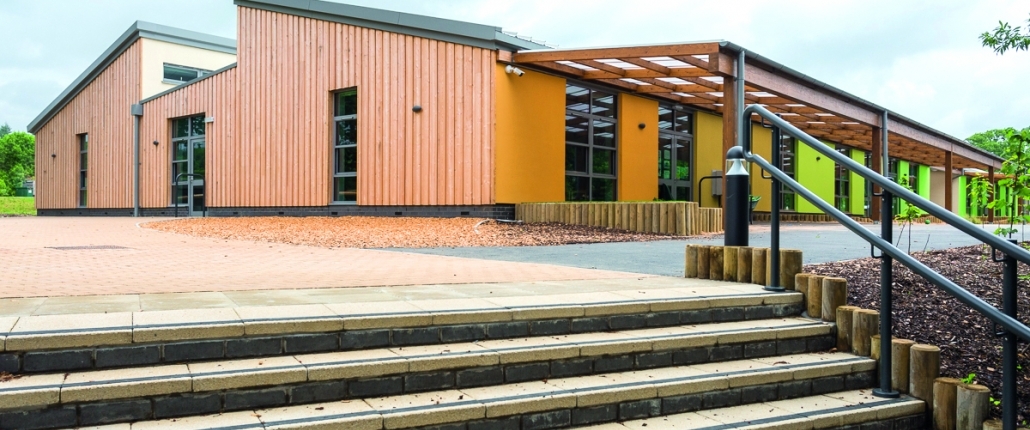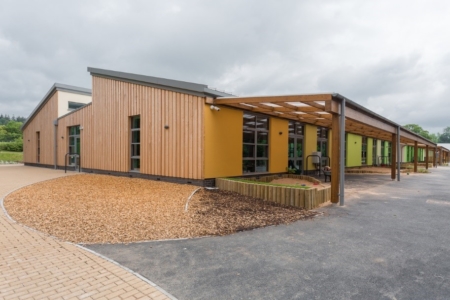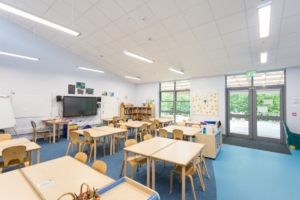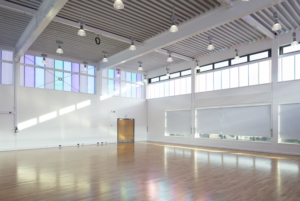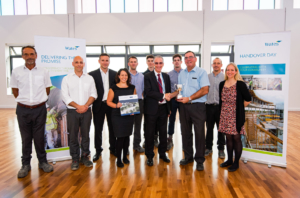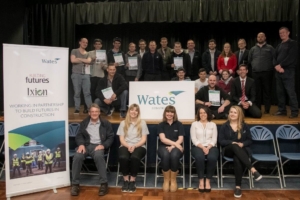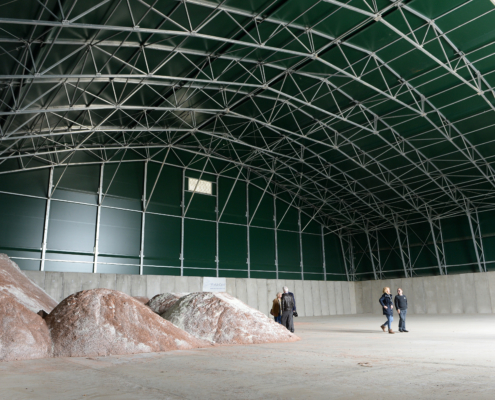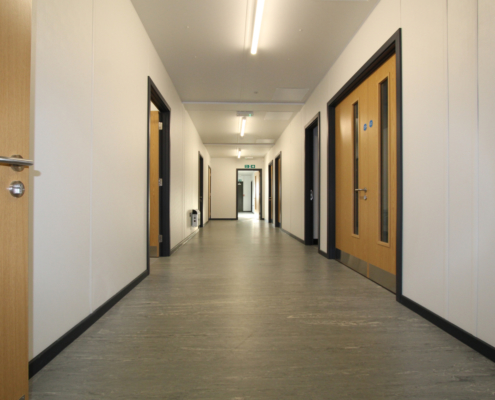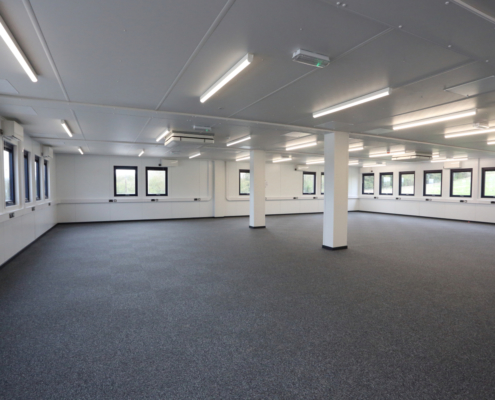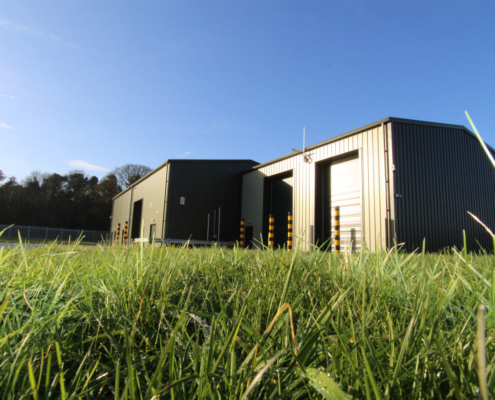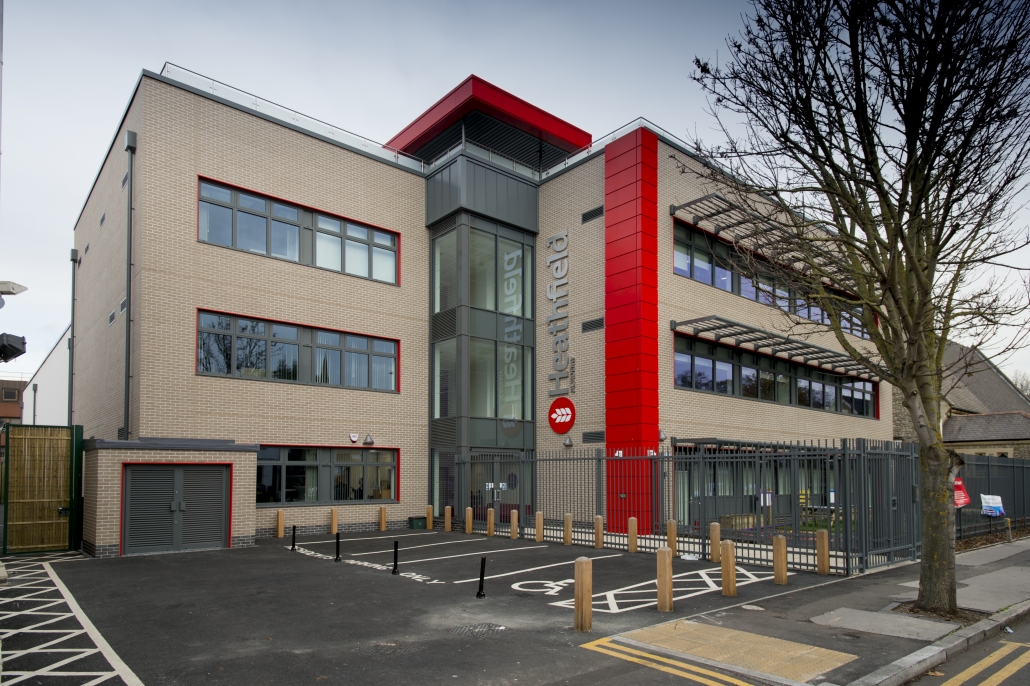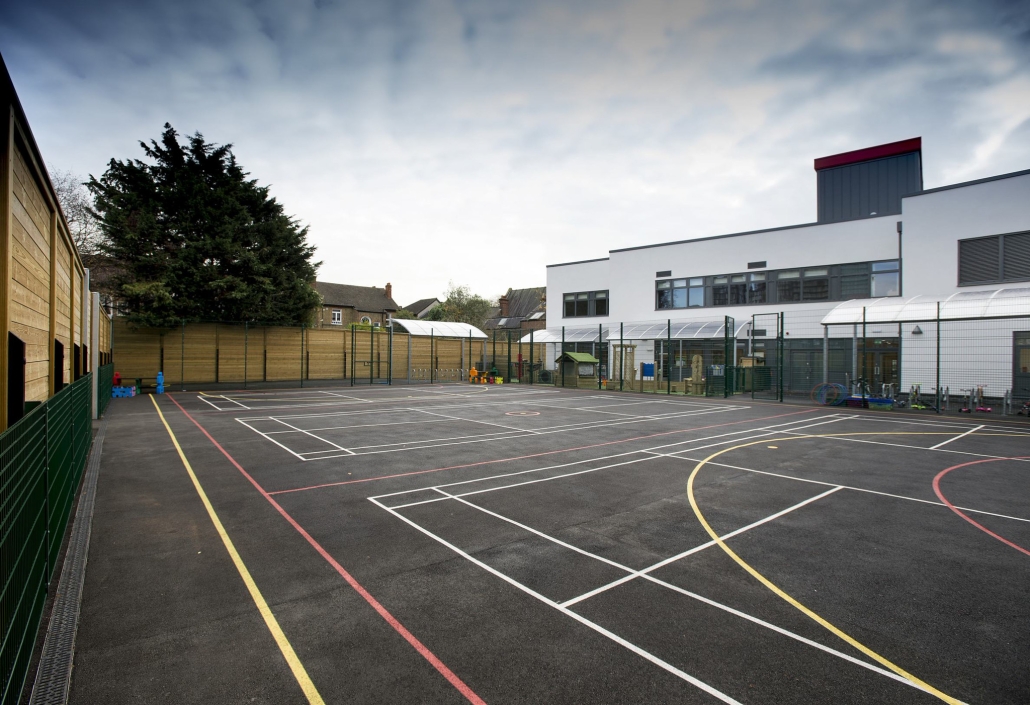National College for Nuclear
National College for Nuclear
Bridgwater, Somerset
Project Details
Client
Bridgwater & Taunton College
Project Manager
Bridgwater & Taunton College
Architect
Austin Smith Lord LLP
Contractor
Midas Construction Ltd
Value
£7.1 million
Contract Period
56 weeks
Procurement Type
2 stage open book
Form of Contract
JCT Design & Build 2011
Size
2,690m²
Project Summary
The multi-award winning National College for Nuclear (NCfN) is a flagship nuclear training centre offering classrooms, simulators and practical training facilities. The innovative NCfN is transforming teaching in this sector to meet the demands of this growing industry. The state-of-the-art educational spaces include virtual reality (VR) and reactor simulator suites, computer labs, training classrooms and workshops; and the campus offers staff facilities, a gymnasium, social area and changing amenities.
Midas completed this design and build project to BREEAM Excellent, constructing a pair of two-storey buildings with an enclosed link bridge at the college’s live Cannington Campus. Works included a lift shaft; fit out; mechanical, electrical and plumbing works; raised access flooring; and external infrastructure works including roads, paving and landscaping. Internally, Midas provided high capacity Wi-Fi coverage, floor boxes for power and fixed data ports to each room and the curtain batten to the perimeter of the VR suite.
The NCfN won “Project of the Year (over £5m)” and was shortlisted for “Education Project of the Year” in the 2018 Michelmores Property Awards; won “Best Educational Building” in the 2018 Somerset Building Control Partnership Awards; and won “Digital Construction Project / Initiative of the Year” in the 2018 Constructing Excellence South West Awards.
“The National College for Nuclear (Southern Hub) has been a great success for the College providing superb flexible training facilities for our students. The feedback from staff and students has been excellent and the building has also been recognised to date by being shortlisted for five awards of which it has won three, a superb result. These results were achieved through an excellent relationship between the main contractor Midas, the College and the members of the design team that has produced an award winning building, built on budget and to meet the clients timescales for occupation. “
Community Engagement
Career Opportunities
- The project created 98 jobs for local people; employed a trainee site manager and a subcontractor apprentice; and supported eleven work experience placements.
- As part of the Employment and Skills Plan requirements Midas engaged with the local supply chain where possible, with one subcontractor located in Bridgwater itself and the majority of subcontractors based in the South West region.
Supporting Local Businesses
- Of the total firms Midas employed on the project, 96.9% were SMEs with 35.9% of the project value being spent with local companies.
46% of people who worked on the project lived within 30 miles of the site.
Key Challenges
The construction site could only be accessed through the live campus.
To safely manage site access through the operational campus, Midas worked with the college during the preconstruction stage to agree management of site access through the live college and to agree suitable delivery time and size restrictions with a strict delivery protocol, including employing a full time gate controller located at the college entrance to direct site traffic and keep the site gates closed. At the start of the works the team erected Heras fencing to low risk areas and solid hoarding at high risk areas.
During the construction stage Midas carried out site weekly logistic meetings with the client and liaised frequently with the college staff, programming works to their convenience to mitigate disruption and maintaining a positive working relationship.
It was essential that the live college had uninterrupted service provision and campus access during term times.
Midas ensured the college had continuous services and undisturbed, safe campus access for staff and students by completing infrastructure and service works during weekends, with works involving disconnection of the power completed outside of the college’s operational hours. Midas maintained access and egress through the campus and confirmed quiet periods with the college, planning noisy works outside of exam times and keeping them to a minimum. The team completed all high-risk works during college holidays.
The client required the project delivered to BREEAM Excellent.
The project successfully achieved BREEAM Excellent through measures including: installation of 52 roof mounted solar PV panels with an area circa 300m²; fitting of energy efficient lifts; formation of bicycle storage; use of eco site cabins with EPC ratings; diversion of 98.9% of waste from landfill; and recycling 97% of materials. All inert excavated or demolished materials remained on site and the team donated surplus materials, such as bricks and carpet tiles, to the college’s estates department. Midas minimised disturbance of the live campus and achieved credits towards the BREEAM Excellent certification by appointing an acoustician to carry out acoustic testing for plant noise levels. Testing included an assessment of noise impact from fixed sources, with noise from the proposed fixed plant equipment assessed to minimise impact on neighbouring noise sensitive buildings; measurement of airborne and impact sound insulation between sample rooms; sample measurement of the internal ambient noise level; and sample measurement of reverberation times.
The college needed use of an existing ancillary workshop, due to be demolished as part of the programme, until the end of the 2017 academic term.
Midas adjusted the programme of works to accommodate the college’s requirements. The team left the workshop building operational until the college’s summer break, then employed a licensed contractor to remove asbestos containing materials (ACMs) from the workshop prior to demolishing it. The site team segregated areas with ACMs, included asbestos awareness in toolbox talks and followed Midas’ asbestos policy, including creation of a site specific HS002 Asbestos Management Plan, to safely manage these works.
Project Takeaways
Our Success
- During the two-stage tender process, Midas consulted with the client to agree selected subcontractors and add allowances for agreed work packages. Following agreement with the client at the preconstruction stage, the team completed an attendance matrix for the supply chain to plan supervision requirements.
- Prior to commencing construction, Midas agreed oversail of the crane with the college. However, during works the team found a solution to position the crane to avoid oversail, thereby minimising the risk. The site utilised vertical segregation and completed ground-bearing tests prior to installing the crane.
- The client engaged Midas from RIBA Stage 3 on this two stage design and build project, with planning consent achieved with a novated design team. Midas worked collaboratively with the existing team, focusing on the design, cost and programme to ensure the quality of the project was guaranteed. With the key delivery team on-board during the preconstruction, Midas were able to make a fast start which allowed an extended commissioning and handover period.
- The site received written compliments from local residents regarding traffic movements; before commencing works, Midas redesigned the traffic management plan to avoid sending delivery traffic through the village, to mitigate disruption to the local residents, and issued pre-start information to neighbours and the college regarding planned works. The team maintained access for neighbouring properties wherever possible and communicated access restrictions to those affected in advance of works. The team provided advance notice of potentially disruptive works and displayed 24-hour contact information.
Our Learnings
- Fitting traditional downpipes for drainage from the roof proved challenging due to limited drop locations. As part of the design and build process Midas issued a specialist enquiry to review options, provided quotes to the client and, upon agreement, proceeded with a gravity fed design.
Value Added
- Midas offered the client £872,441 (12.7%) of best value savings at Gateway 3 with £933,441 (13.2%) of savings delivered at Gateway 4. Savings include cladding alternatives (with a delivered saving of £183k); review of the M&E (delivered savings of £122k); provision of M&E equipment with an improved lifespan (saving £20k); and review of the RC frame (delivered savings of £98k).
- The project created 98 jobs for local people; employed a trainee site manager and a subcontractor apprentice; and supported eleven work experience placements.
- As part of the Employment and Skills Plan requirements Midas engaged with the local supply chain where possible, with one subcontractor located in Bridgwater itself and the majority of subcontractors based in the South West region.
- Of the total firms Midas employed on the project, 96.9% were SMEs with 35.9% of the project value being spent with local companies.
46% of people who worked on the project lived within 30 miles of the site.
KPI’s & Statistics
| Contract | Gateway 2 – Planning | Gateway 3 Contract Agreement | Variation |
| Cost | £7,391,129 | £6,843,317 | -£547,813 (-7.4%) |
| Time | 54 Weeks | 54 weeks | 0.43 weeks 0% |
KPI Graphs
- Apprentices: 408 waged training
- Graduates: weeks delivered
- Average AIR: 0
- Average CCS score: 41
- Waste diverted from landfill: 98.9%
- Cost/m2: £2,544m²
- Cost/m2 excl abnormals: £2,199m²


